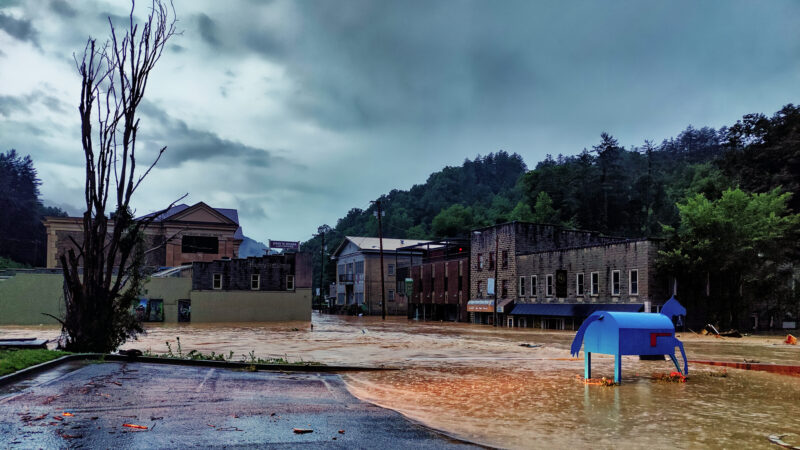One morning last July, I had crossed the low trickle of Troublesome Creek on a pedestrian bridge that is the symbol of the Hindman Settlement School, an institution focused on preserving mountain heritage in Hindman, Kentucky. The day was sunny; the creek was just a few inches deep. On one side of the bridge, minnows and creek chubs cast shadows on the silty bottom. On the other, a soft-shelled turtle was wedged beneath a rock, its long nose sticking out of the water.
It had been raining much of the rest of the week, and the rain returned in earnest that evening. I didn’t take much notice. Neither, it seems, did anyone else. We were too busy doing what writers do when they get together: laughing, joking, telling stories. Someone had a guitar and someone else had a fiddle and some of us sat on the porch listening to the music and the brushes-on-snare-drum sound of the rain.
At 3:00 a.m., I heard banging on my door and the call to evacuate. Over just a few hours, the aptly named Troublesome Creek had risen by more than twenty feet. Alarms screamed from submerged vehicles; headlights flashed beneath the murky, swirling water. The creek filled the school offices to the ceiling, drowning computers and desks and most of the one-hundred-year archive, its papers and quilts and musical instruments.
Everyone gathered in a higher-ground building and waited. We talked in low tones. We passed around a bottle of whiskey. Some of us panicked, some were oddly calm. All of us were afraid. A few hours later, the waters receded. The school was to become an emergency shelter. The most helpful thing we could do was go home.
The Flooded Town
Forget for a moment what’s to come — reek of diesel,
swollen drywall crumbling to dust, liberated
spores of mold in full, black bloom — and notice this:
an empty town at the exact moment the waters crest,
nearly silent and everything still. Places that were
backyards and ravines and parking lots and will be again
are, for the moment, backwaters where ducks
and wading birds survey their temporary territory.
A green heron perches on a state road sign. A pair of mallards
paddle past the drowned steps of the Baptist church.
In the stillness, clouds are breaking up and sunlight
is spilling through. This is not the optimistic ending,
the silver sentimental lining. No one will be spared
their share of sorrow, their little ladleful of loss:
misery has a long reach. But for now, one might be forgiven
for seeing them as beautiful: these sunken, unpeopled streets.

